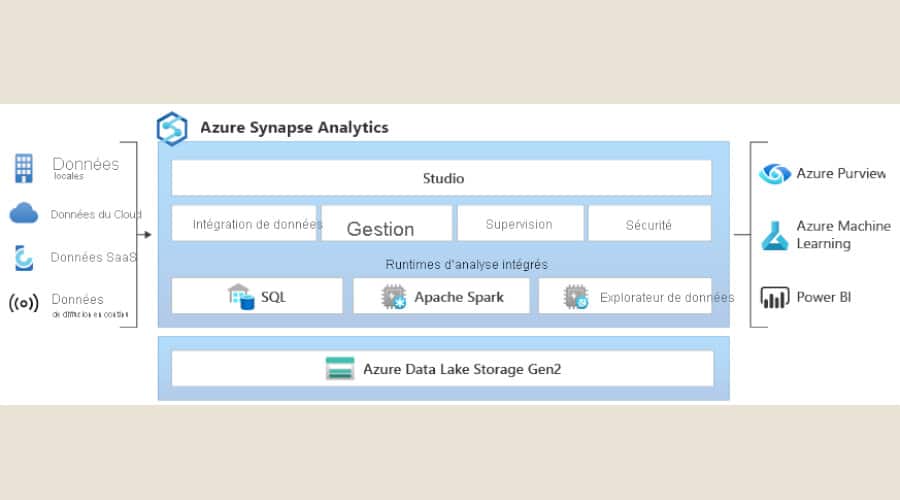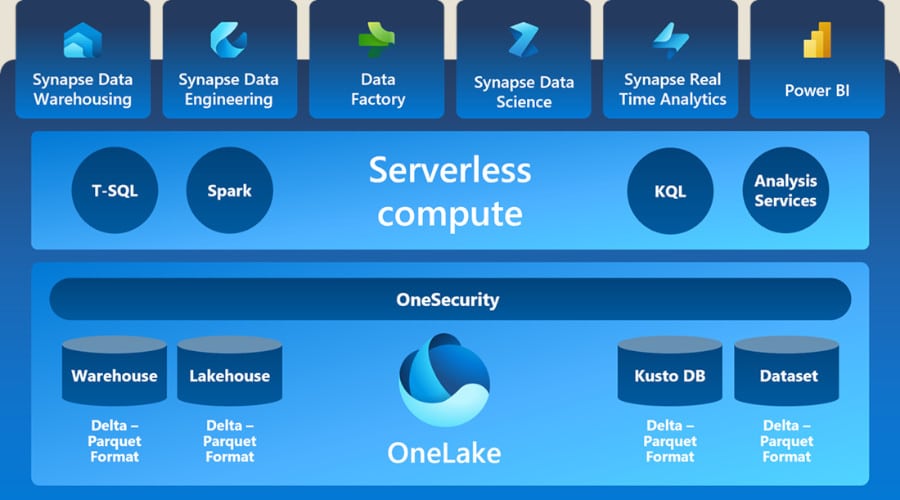Microsoft Fabric is an all-in-one Data Science solution in the form of a SaaS cloud service, bringing together OneLake and numerous data storage, engineering and analysis tools. Find out all you need to know about this platform that simplifies the life of Data Scientists, and how to master it!
With the rise of AI and the massive adoption of Data Science in the enterprise, data has become an essential resource for digital transformation and an indispensable asset for competitiveness.
However, over the years, the multiplication of tools has led to excessive complexity. In many organizations, data scientists use a variety of software tools to collect, store, analyze, visualize and engineer data.
In particular, modern Data Lakes have become fragmented and disorganized, making them difficult to build, integrate, manage and use.
To meet the need for unified, easy-to-use solutions, Microsoft has launched Fabric, a comprehensive platform for Data Science via the Cloud.
What is Microsoft Fabric?
Launched in May 2023 at the Microsoft Build conference, this all-in-one analytics platform covers all Data Science needs, from storage to data transfer and real-time analysis, bringing together a wide variety of technologies and tools in a single solution.
The aim is to implement a modern data architecture based on the principles of data mesh, data fabric and data hub.
This gives companies centralized access to data lake, data engineering, data integration and business intelligence functionalities.
This is not the first time that Microsoft has brought together several services in a single solution. In 2015, it brought together Power Query, Power View and Power Pivot to create Power BI.
This platform quickly established itself as a benchmark for business intelligence. With Fabric, Microsoft is aiming to repeat this success in the field of Data Science.
To better understand the benefits of this unified approach, let’s take a look at the platform’s six main components.

OneLake: the open-source storage service
Fabric’s various services enable all the different Data Science operations to be carried out, and are therefore suitable for a wide variety of use cases.First of all, OneLake is the platform’s storage layer and central repository. This lakehouse architecture enables data to be stored in delta lake format.
This is an open-source format, so Fabric’s architecture is also open. Any product that can read delta lake data can be integrated.
Its data hub is the central place to find, explore and use data assets within Fabric.
A very useful feature is the ability to create shortcuts pointing to other data locations such as ADLS Gen2 or AWS S3. This eliminates the need for multiple copies.
The Synapse Analytics suite of tools
The various Microsoft Synapse Analytics tools are incorporated into Fabric. These include Synapse Data Warehouse, an evolution of Azure SQL Data Warehouse.
This SaaS solution is fully managed, and can be used with or without code. It also supports cross queries and automatic resource scaling.
Synapse Data Engineering is an Apache Spark service for data transformation. It comes with Runtime 1.1. which includes Python 3;10, Apache Spark 3.3.1 and Delta 2.2.
With Synapse Data Science, it’s possible to build, deploy and manage Machine Learning and AI models. Notebooks and Visual Studio tools enable collaboration.
For real-time analysis of data from streaming sources, Synapse Real-Time Analytics can be used. Its scalability is unlimited for concurrent users and queries, and a single click is all it takes to create Power BI reports from the results!
Microsoft’s Business Intelligence platform is also incorporated into Fabric, and can be accessed directly from the main menu.

Microsoft Fabric and AI
Generative artificial intelligence is a revolutionary technology in the spotlight, and Microsoft is determined to integrate it into all its tools and services.
Fabric, for example, enables the use of Azure OpenAI Service and GPT-based AI Copilot. Users can therefore use natural conversational language to interact with the tools.
This enables them to create data streams or pipelines, generate code and entire functions, build Machine Learning models or visualize analysis results.
What are the advantages of this platform?
Fabric’s main strength is its simplicity. Users no longer need to worry about the technologies required for their analysis work, and can concentrate on the results.
What’s more, the integration of Power BI, Azure Synapse and Data Factory into a single environment offers numerous advantages.
It provides access to a wide range of analysis functions, and facilitates information sharing, data access and reuse.
What’s more, the unified Data Lake gives you the freedom to use your favorite analytical tools, while leaving the data in one place. Governance and administration are also centralized.

How do I use Microsoft Fabric?
To start using Microsoft Fabric, simply visit app.fabric.microsoft.com. You can try out the platform free of charge for 60 days, without having to provide any payment details.
Enter your company’s e-mail address and click on the button to start the free trial. However, a Power BI license is required.
Once you’ve created your account, you can choose between the different experiences: Data Factory, Power BI or Synapse Data Engineering, Data Science, Data Warehouse and Real-Time Analytics.
If you want to train an ML model and visualize its predictions, you can create a notebook with Synapse Data Science, enter the training data into the lakehouse and then clean and transform it with Apache Spark.
Trained models can be saved and tracked with MLFlow, and predictions and inference results saved in the lakehouse. Finally, predictions can be visualized in Power BI.
Another use case is the real-time analysis of streaming data. You can create a KQL (Kusto Query Language) database and an eventstream from the Real Time Analytics experience. Here again, a Power BI report lets you visualize the results!
Conclusion: Microsoft Fabric, an all-in-one data science platform in the Azure cloud
By combining all the tools needed for the various stages of data science in a single platform accessible via the cloud, Microsoft Fabric enables professionals to save time and increase efficiency.
To learn how to handle Microsoft Azure cloud tools and all the best data science tools and techniques, you can choose DataScientest.
Our various training courses enable you to acquire the skills required to work as a Data Analyst, Data Scientist, Data Engineer and all other Data Science professions.
You’ll learn about the Python language, database tools, DataViz and Business Intelligence solutions, as well as Machine Learning and Deep Learning.
All our courses are distance learning and eligible for funding options, leading to a MINES Paris Executive Education diploma and AWS or Microsoft Azure cloud certification.
We also offer certification courses entirely dedicated to Microsoft Azure or the Power BI business intelligence platform. Find out more about DataScientest!










